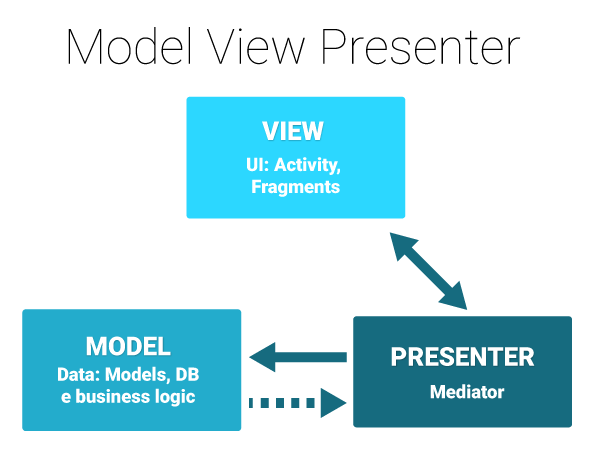android best design patterns app
One of the big mistakes I have made is that I did not choose any proper architecture design from the starting point for many projects.
But why does your app need good architecture?
A simple answer is that everything should be organized in a proper way. So does your Android project.
If not, the following problems sound familiar to you:
- All of your codes are not covered by Unit Tests.
- It is difficult to debug a class because it contains a huge number of functions.
- You are unable to keep track of the logic inside that huge class.
- Another developer finds it so difficult to maintain and add new features to your work.
So, if you are going to build a high-quality app, you should care about architecture.
What does your app get from a proper architecture?
- Simplicity: Separate and define a clear single role for each component in your app. A class is not going to be a multi-tasking component. You will find it easy to know what it does and what is inside it. It advocates the Keep It Stupid Simple (KISS).
- Testability: Before we can apply Unit Tests, we have to write testable codes.
- Low-cost maintenance: It is easy to add, and remove features. Especially, it helps us to keep track of important logic parts.
Several upcoming questions maybe appear in your head.
- So, what is the best architecture pattern for my Android apps?
- And how can I apply that pattern in the most effective way?
There is no single candid a te that suits all of your Android projects because the design pattern is abstract and its implementation depends on specific requirements.
Fortunately, the more we understand about it, the more effectively and properly we apply them.
You can use different architectures across different apps. Even, in one complex project, each module has its own structure.
Another question?
So, if I have never used any architecture in my Android apps yet. So, what should I do?
Just pick up one of them. Read about it, try to apply it. After that, you will become familiar with it and have your own best practices.
Developers out there are talking about these following popular patterns:
- MVC ( Model — View — Controller)
- MVP ( Model — View — Presenter)
- MVVM (Model — View — ViewModel)
- Clean Architecture
These architecture patterns above made me really confused for the first time.
However, let's go with one of them and see how it works, after that you can understand the remaining ones.
MVP in Android
MVP is strongly recommended because a lot of developers are using it now. Even, Google also provides its best practice example on Github.
The definition is not always an interesting part but it is vital. We should even check it out, again and again, to understand it deeply.

- View = a passive interface that displays data and routes user actions to the Presenter. In Android, it is represented by Activity, Fragment, or View.
- Model = a layer that holds business logic controls how data is created, stored, and modified. In Android, it is a data access layer such as database API or remote server API.
- Presenter = A middle man which retrieves data from Model and shows it in the View. It also processes user action forwarded to it by the View.
Important points of MVP are:
- View can not access Model.
- Presenter is tied to a single View. (One-to-One relationship)
- View is completely dumb and passive (only retrieve user action and leave all other things for Presenter to handle).
A small example
This "hello-mvp" app has been defined by two following functions:
- Save name: Get the first name and last name from EditText inputs
- Show name: Load the saved name and show it on a TextView
A simple version of the Model look likes this.
The following contract keeps both functions of the View and the Presenter. It is a good guideline to keep track of their relationship.
You need a concrete Presenter class in implementation.
An implementation of the View is an Activity.(or a Fragment if you prefer that way).
An above example is just a simple approach of applying MVP to Android apps. Hope that you find your own best practices for your projects.
The full source code can be found on Github repository .
Finally, there are many resources about MVP in Android out there, but I highly recommend some of them which are listed below.
- Google MVP sample repository
- Android best practices for MVP
- Difference between MVC and MVP
The more we learn about it, the more effective we implement it.
Besides, I also wrote other following articles related to MVP architecture topics. I hope that you find them useful.
android best design patterns app
Source: https://medium.com/android-news/architecture-patterns-in-android-abf99f2b6f70
Posted by: painterfropriat.blogspot.com

0 Response to "android best design patterns app"
Post a Comment